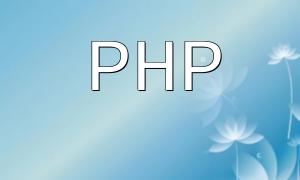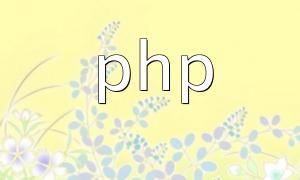In modern internet applications, real-time communication has become an indispensable feature. Users can communicate instantly through voice and video calls, improving interaction efficiency. This article will explain how to use PHP technology to implement voice messaging and video call support in real-time chat.
WebRTC is widely applied for low-latency audio and video communication, and audio capture is quite straightforward. The following code example shows how to use the navigator object to request audio permission and obtain the audio stream:
// Request audio using navigator object
navigator.mediaDevices.getUserMedia({ audio: true, video: false })
.then(function(stream) {
// Successfully obtained audio stream, proceed with further handling
})
.catch(function(err) {
console.log(err);
});
This code calls getUserMedia to request user permission for audio, and if successful, obtains the audio stream via the then method; errors are handled by catch.
After obtaining the audio stream, you need to transmit the audio data to the server in real time. WebSocket provides an efficient real-time messaging channel. Example code is as follows:
// Create a WebSocket connection
var socket = new WebSocket('ws://localhost:8080');
// Send audio stream data to the server
socket.send(stream);
This code establishes a WebSocket connection and uses the send method to transmit the audio stream to the server, ensuring real-time voice data delivery.
Video stream capture is similar to audio capture and can be easily done with WebRTC. The following example shows how to request video permission and obtain a video stream:
// Request video stream using navigator object
navigator.mediaDevices.getUserMedia({ video: true, audio: false })
.then(function(stream) {
// Successfully obtained video stream, proceed with further handling
})
.catch(function(err) {
console.log(err);
});
This code requests user authorization for camera access via getUserMedia; upon success, it obtains the video stream; errors are logged on failure.
After obtaining the video stream, you also need to transmit it in real time via WebSocket to ensure a low-latency video call experience. Example code is as follows:
// Create a WebSocket connection
var socket = new WebSocket('ws://localhost:8080');
// Send video stream data to the server
socket.send(stream);
This code establishes a WebSocket connection and sends the video stream to the server, enabling real-time video data transmission.
This article introduced how to use PHP combined with WebRTC and WebSocket technologies to implement voice messaging and video call features in real-time chat. With these technologies, developers can easily achieve low-latency audio and video stream capturing and transmission, greatly enhancing user interaction experience and the real-time communication ability of applications.









